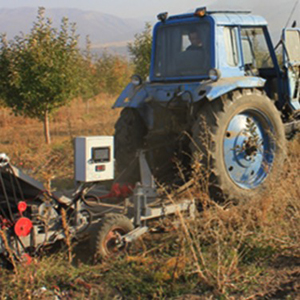 Smart Citations
Smart CitationsSee how this article has been cited at scite.ai
scite shows how a scientific paper has been cited by providing the context of the citation, a classification describing whether it supports, mentions, or contrasts the cited claim, and a label indicating in which section the citation was made.
Power need of an implement for removing polymer residues from the soil surface in Kazakh horticulture
Polymeric materials are largely used in horticulture for mulching and irrigation, but their long degradation time causes various environmental and agronomic problems, hence should be removed at the end of the crop cycle. Among different mechanised techniques for collecting polymer residues from the field, the single- phase one is the most effective, since the plastic film and irrigation tape lifting, cleaning, and collection operations are done in a single pass, though, in most cases, the implements used in Kazakhstan still need an operator to manage the winding mechanism. The authors, who developed a completely automatic plastic retriever based on a hydraulic drive with a friction clutch for winding up the plastic materials, assessed the power need of the implement in order to compare it with the power need of similar implements, where the winding mechanism is hand-operated. Consequently, power consumption is high due to the need to stop and start the engine many times. In this study, the parameters of the hydraulic drive were determined by analytical calculation, starting from pressure and speed data measured on the hydraulic line and velocity and traction resistance of the implementation measured during the field tests. The maximum power needed to drive the winding mechanisms resulted in 1.86 kW at a forward speed of the unit of 1.8 m⋅s–1. Secondary, the operation costs were broadly assessed, finding that they were about 43% less than when using man-driven equipment.
How to Cite

This work is licensed under a Creative Commons Attribution-NonCommercial 4.0 International License.
PAGEPress has chosen to apply the Creative Commons Attribution NonCommercial 4.0 International License (CC BY-NC 4.0) to all manuscripts to be published.

 https://doi.org/10.4081/jae.2022.1382
https://doi.org/10.4081/jae.2022.1382





